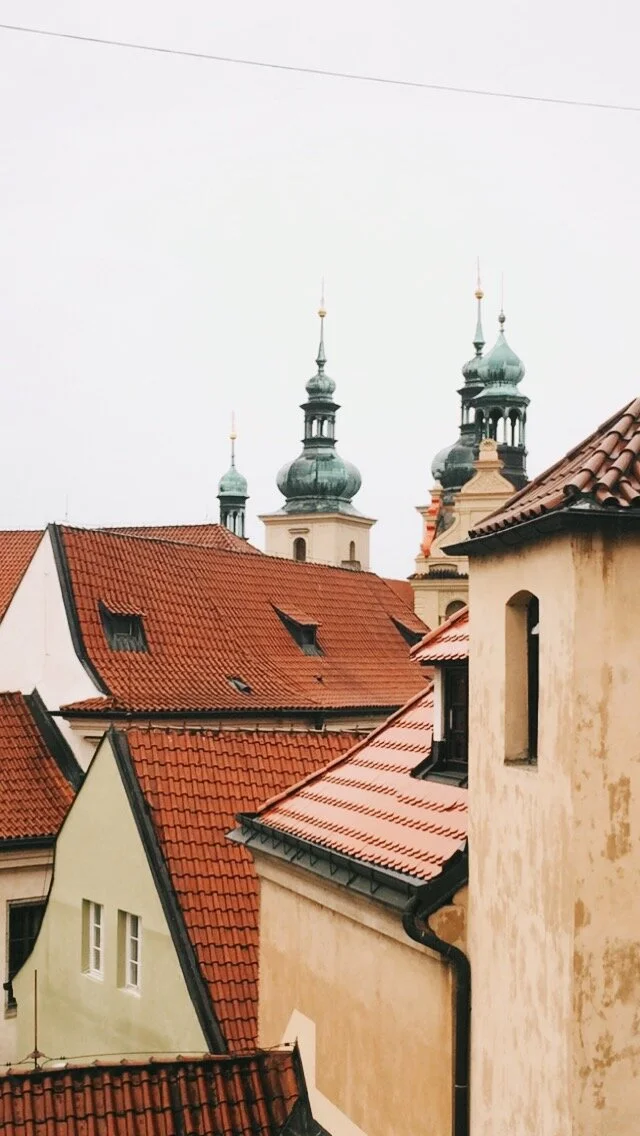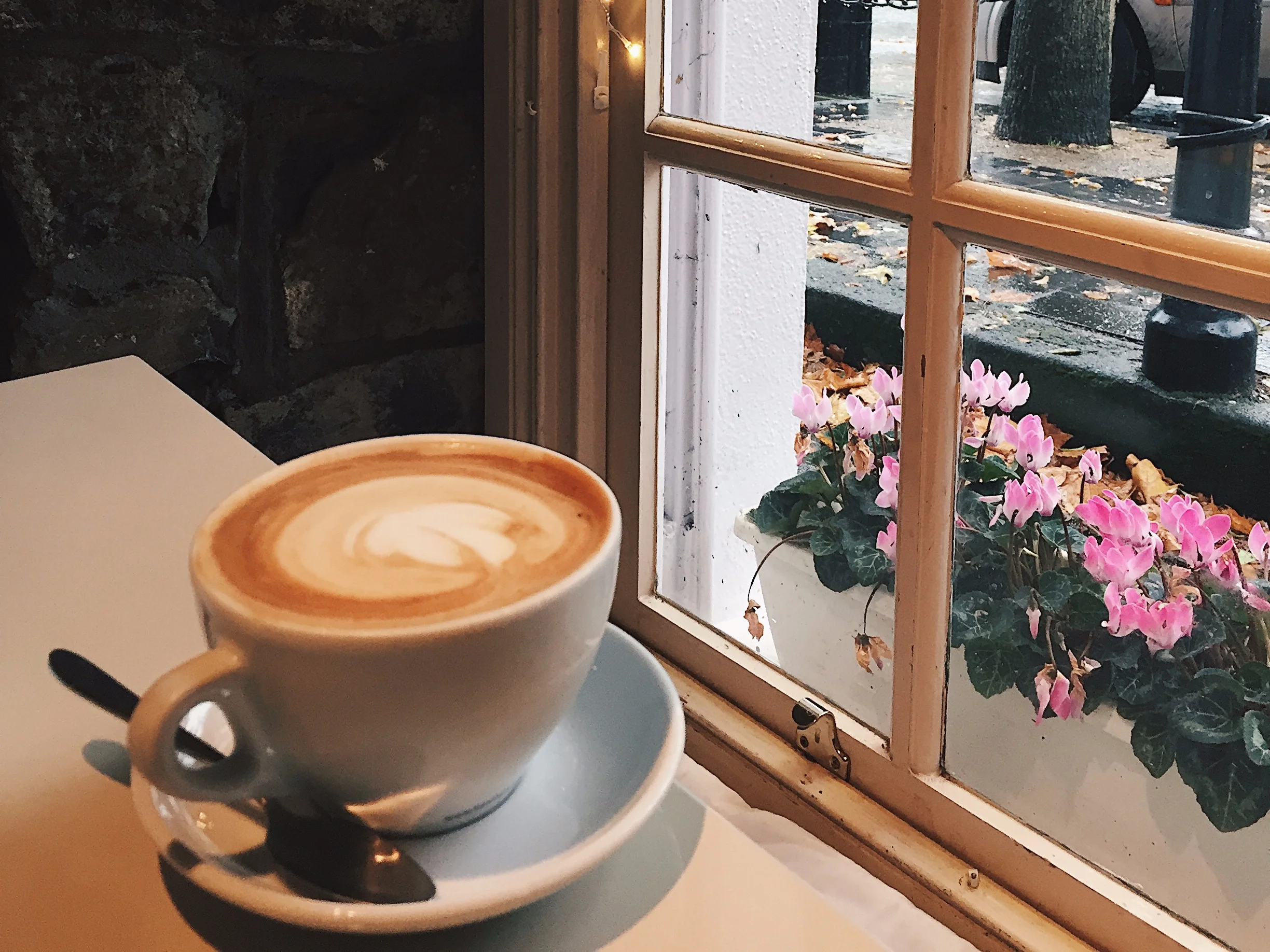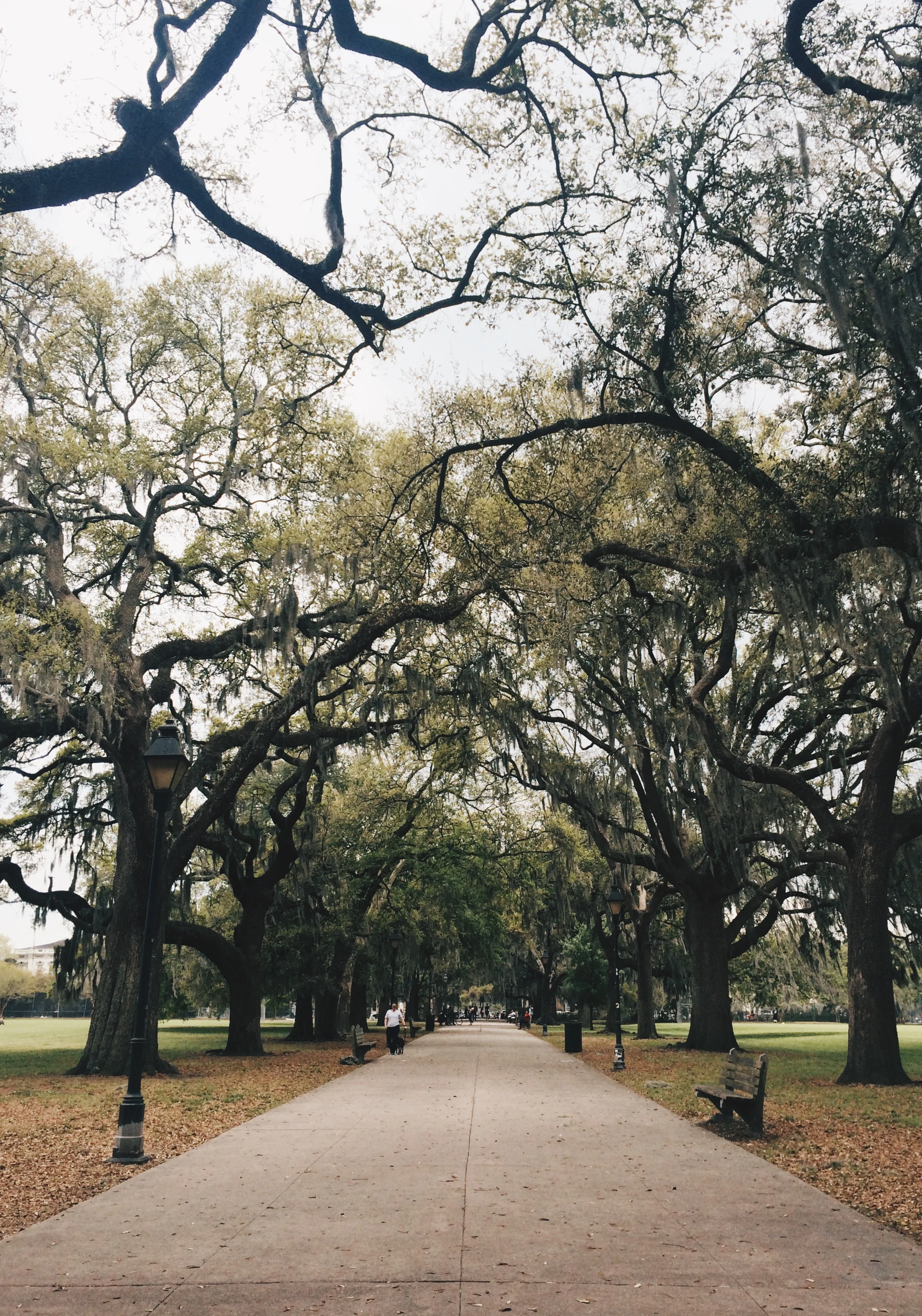Four Nordic Recommendations To Indulge Your Winter Blues
Photo courtesy of Corinne Elicona.
“I thought the solution to winter’s inhospitality was to fight it at every turn […] I didn’t understand that the cure to my winter blues was to bend with its icy branches of introversion and dormancy and not against them.”
The holidays have come and gone and now the real work of winter begins. The world is inhospitable. Darkness outbids light at the auction of time in the day. The produce at the grocery store grows paler, firmer. Houseplants wither in their corners going dormant until the sun graces their leaves and allows them to grow in the Spring. Your co-worker shows up to the office with the flu...again?? (what is sick time even for?)
I raged against winter for most of my life. Layering? What is that? T-shirt + puffer jacket= all bundled up. Gets dark at 4pm? Stay up until 2:00am anyway and wake up half-way through daylight hours and wonder: “why am I so tired during the winter?” I thought the solution to winter’s inhospitality was to fight it at every turn and continue living my life as I did in the happier, sunnier, livelier days of Spring, Summer, and Fall. I didn’t understand that the cure to my winter blues was to bend with its icy branches of introversion and dormancy and not against them.
In this modern age, I believe the idea of self-care has the tendency to become a one-dimensional “treat-yo-self” party. You work hard, you suffer, you deserve to do the things that only feel good, and not the things that are necessary. For example, treating yourself to a fancy clay facemask is self-care. Cleaning your toilet is not. Descending into the depths of YouTube videos that fill the void that is your soul is self-care. Sitting and engaging with your insecurities and having the bravery to be bored is not.
“The answer is not to lament the unchangeable aspects of the situation for the rest of the day, but to use the gift of the opportunity to be undistracted.”
I find that winter is the bedfellow of these necessary things, that don’t always feel good to do, but can build healthier habits in the long-run. We can use these months of darkness and cold to expand on ourselves in ways that we are distracted from in better weather. Whenever a winter storm would trap me in my apartment all day, it would feel as if I was being held against my will. All my life I was taught a life worth living meant good company, good food, and adventure. But now all the restaurants are closed, my friends feel too far away to reach, and my transportation is buried under 2 feet of snow. Now, the answer is not to lament the unchangeable aspects of the situation for the rest of the day, but to use the gift of the opportunity to be undistracted. Read that philosophy book that you worry will violently disintegrate what you’ve come to know about the world. Challenge yourself by learning something new, something difficult that you won’t be good at right off the bat. Think about your relationship with your family and friends, and what you can do to better them. And for god’s sake, clean your toilet.
Over the past six years I have been learning to become comfortable with discomfort. Comfortable with the cold, with the dark, with the things beyond my control, and with the things I don’t like about myself. In no way has it been a simple or linear process, but I always make my biggest strides during the winter. And more than any other, I find that I bond with these wintry necessary things most of all through Scandinavian literature, art, and music.
Photo courtesy of Corinne Elicona.
A little backstory: my ancestry is Swedish, and you can’t go 5 minutes into meeting my grandmother without hearing about it. I am an American, but Scandinavian identity was an important part of my cultural upbringing. So when I read Ibsen or Kierkegaard, there’s a unique weight to it to know that my lineage existed in the same time and place as these writers–and suffered the same winters. Funny enough, my descent into becoming a Scandi-phile began one winter break in my sophomore year of college with a goofy little Norwegian show called “Lillyhammer”. Stevie Van Zandt (yes, I know) plays a New York mob boss transplanted through witness protection to Lillehammer, Norway and… hilarity ensues.
The comedic formula of the show is that Norway is safe, quiet, and full of empathetic, cautious, by-the-book people that are constantly cramping this mafioso’s style. I sat with my grandmother – on those depressing, boring, winter days in January that I despised – watching a show where the snow was 5 feet higher and the weather 20-30 degrees colder, and yet that was the charm of the land and the source of the resourcefulness of the people. Stevie Van Zandt doesn’t know he needs literal chains on his tires to drive anywhere – look at that silly American sliding around on the road not knowing the simple solution is available to him if he only took a second to look at all the other tires on the road. This is the moment where I began to cherish winter, its unique challenges, and it also was the moment where I began wearing thermal layers.
That Spring semester, I signed up for a few Scandinavian studies courses. One about the Sagas and the historic thread of what is considered the Modern Viking, and the other about modern Scandinavian media and its themes of mystery and mayhem. For the remainder of this article, I would like to share with you the most formative pieces of Scandinavian art I encountered on my journey to loving winter, and I hope that if you are someone who struggles with it like I have, that these will help you weather the storm. I can guarantee that none of these suggestions will fill you with happiness, in fact quite the opposite... But I do guarantee you will feel seen.
❅
“The Ice Palace”
Tarjei Vesaas (1963)
More than anything else The Ice Palace embodies mayhem, non-closure, and the icy grip of winter. Vesaas tells the story of two young girls, Siss and Unn as they discover each other as platonic soul-mates during a single evening. They stare at each other like they are looking into a mirror and both of them grasp the almost-mystical connection they share.
“Four eyes full of gleams and radiance beneath their lashes, filling the looking-glass. Questions shooting out and then hiding again. I don’t know: Gleams and radiance, gleaming from you to me, from me to you, and from me to you alone—into the mirror and out again, and never an answer about what this is, never an explanation.”
Neither of them have the vocabulary to communicate how important they are to each other and they become frustrated by the way society has stifled their ability to express themselves emotionally. They go their separate ways after spending one afternoon together, and then Unn disappears in the frigid landscape, never to be found again. Siss must go on, not knowing what happened to her friend and unable to communicate to the adults in her life how important this person she had just met was to her. She is emotionally whole and raw, but the people in her life are stunted.
The reader unfortunately, has a more complete picture of what happened to Unn after her disappearance: she froze to death. This isn’t a big spoiler or anything. Actually, the emotional torture of this novel is that the whole time Siss is desperate to know what happened to her friend and where she was, just to have some sort of closure. The reader knows all too well and is screaming at her beyond the pages.
The day after Siss and Unn’s fateful meeting, Unn finds herself very embarrassed. She can’t imagine seeing Siss at school with the burden of all these weighty and confusing emotions. It’s important to remember Siss and Unn are 11 years old in this story. So, Unn decides to play hooky and on her way to school she wanders out onto the ice. In Norway, it gets so cold that waterfalls will freeze. They create cavernous frozen spaces at their base that, for the purposes of this novel, become similar to small rooms in a funhouse maze.
Unn wanders into this “Ice Palace” to take shelter from the wind, and is unable to find her way out. The last glimpse the reader gets of Unn is that she is slowly freezing to death: becoming more tired and unable to move with each second. The reader knows that Unn is dying, but Unn never grasps the seriousness of her situation. She is cold, so cold, but then she feels warmth in her core, and then she feels nothing at all.
You’re probably thinking, “You seriously want me to read this book? What kind of masochist do you think I am?” But The Ice Palace is so poetically written (and translated) and tells such a complicated coming-of-age story of grief and communication that I honestly will read it again and again and again even if I cry every time I do. It has taught me important lessons about expressing myself and how I navigate the non-closure and loss of someone important to me because the sheer tragedy of Siss and Unn’s story has been seared into my memory.
❅
Vilhelm Hammershoi, “A Room in the Artist’s Home in Strandgade, Copenhagen, with the Artist’s Wife,” (1901).
Vilhelm Hammershoi
I could talk about Edvard Munch. I could talk about Edvard Munch all day if I wanted to. But when I look at his paintings, I don’t see the reticence and stillness of winter. In fact, his work triggers a sensory overload response in me. There are fiery skies, people staring directly into my soul, large specter-like gusts of wind, etc… No, when I think of winter, I don’t think of Edvard Munch. Instead I think of Vilhelm Hammershoi, a relatively unknown Danish artist and a recluse. He is muted in tone, and the figures in his work are distant and mostly facing away from the point of view.
Vilhelm Hammershoi, “Interior. Strandgade 30,” (1908).
You get the sense that there is a desolation in his work that is made complicated by natural light. Doors play a large role in the framing of his pieces, whether they are closed to represent an unknown outside, or opened to reveal that there is much more beyond that the point-of-view is restricting. But mostly what lie beyond the scene are more hallways, more doors, and more windows.
Meditative is the word that comes to mind when I view Hammershoi’s work. Solemnly meditative. Which I consider to be an aura consistent with the nature of winter. I am that woman silently working by a window. Soaking in as much of the natural light as winter will allow.
❅
“Winter Light”
Ingmar Bergman (1963)
Without going too much into detail, Bergman as a director is famous for working out his struggles with God on the Silver Screen. The Seventh Seal details a man’s struggle with his doubt of God, but his deep-seated desire to have confirmation of an afterlife. The Virgin Spring deals with a devout family’s struggle to forgo revenge and follow god’s wishes for mercy and forgiveness after the brutal rape and murder of their daughter. The Faith Trilogy, of which Winter Light is the second film in the trio, is a more subdued, more ethereal exploration of faith disintegrating over a period of years through a process of acceptance of various unchangeable aspects of life, and what those conclusions lead to in the absence of an affirming God.
Whether or not this trio of films actually constitutes a trilogy is still up for debate by many. However, Bergman himself says the first film, Through A Glass Darkly, symbolises “conquered certainty, Winter Light – ”penetrated certainty”, and The Silence – “God’s silence” in the face of suffering. Through A Glass Darkly makes the argument that God is love and therefore intangible and incomprehensible. One may never have indisputable proof that one is loved, but could never deny the existence of love in the world. Winter Light which was released two years later is a direct rebuttal to this statement.
The film begins in a small parish. A pastor has just ended his prayer service and is now speaking with a couple from his congregation about their emotional struggles. The husband speaks of falling into a deep depression upon hearing the news that China is developing an atomic bomb and the world as we know it could soon meet a fiery end... “We must go on living” the pastor tells him. “Why do we have to go on living?” the man replies.
The weight of this statement is not lost on the pastor. He clearly recognizes he is dealing with someone in a deep and perilous pit of despair, that cannot be ignored. He tells the man to come back that afternoon to discuss this further. But the man never makes it back to the chapel. His body is found by a nearby river after he committed suicide. This weighs on the pastor’s conscience and sends him spiraling into a world of doubt and anger at God.
Winter Light is a film that forces an unflinching gaze at the discomfort and awkwardness of it’s characters. Most famously, Bergman has a close-up of Ingrid Thulin’s character (a previous mistress of the pastor) as she monologues… for six whole minutes. She is delivering the lines of a letter she wrote to the pastor. Eviscerating him for his hypocrisy, his “emotionally primitive” faith, and his repulsion of a rash on her hands. She rips her bandages off and cries,
“God, why have you created me so eternally dissatisfied? So frightened, so bitter. Why must I realize how wretched I am?”
There is an uncomfortable voyeurism that pervades every aspect of Winter Light as if the audience has no choice but to peer in on the most uncharitable aspects of a small town’s intimate drama. Each person who (in their normal roles and parishioners (or lovers)) should be a source of assurance, happiness, and security to the pastor instead force him deeper into a confrontation with his faith. However, there is a bit of, quote, “winter” light in all of this drama. Without spoiling too much, the pastor inevitably comes to the conclusion that even if, in all of this heartbreak he can help someone else find peace with the word of God, then it is unquestionably worth the struggle.
❅
The Silicone Veil
Susanne Sundfør (2012)
Is synth opera a genre? Well, if it is, then Susanne Sundfør’s album, “The Silicone Veil” makes a grand entrance to the category. Just looking it up now on Wikipedia, I see the genre is listed as “Baroque Pop” which I am certainly intrigued by.
The Silicone Veil is an impressive mix of large orchestral synth soundscapes and intimate electro-folk. Sundfør’s high-pitched, perfectly controlled voice reminds me so vividly of the ancient Nordic herding call, “kulning.” I can picture her tending to her robot herd in those high-mountain pastures with her cutting, and clear voice. To me, The Silicone Veil is a perfectly “winter” album.
The title track of the album is one of my favorites, as the lyrics seem to unravel with restlessness – a feeling most familiar to me during these months cooped up inside.
My skin so thin you can see black holes within
my eyes so clear they light up the sky
and sometimes I'll bend into the silicone veil
and enter this world again as a ghost
Beauty is poisonous
disruptive
heaven must be an iron rose
oh, let me in, let me out,
let me in, let me out.
The intro to The Silicone Veil is the most true-to-form folk experience on the album. I am immediately transported to a charming Scandinavian medieval inn enjoying a mug of mead. Okay, maybe that’s just my many hours logged of Skyrim coming through.
The single from the album “White Foxes” is a perfect mixture of classical drama and modern appeal. The melody is enchanting as it explores places you didn’t expect to be taken, but at the same time Sundfør’s blossoming emotions throughout the song are satisfyingly cathartic as they unfold.
Susanne Sundfør.
❅
Regardless of how you tackle the hard work of winter, I think we can all benefit in some way from introspection and facing our issues head on. For me, winter is the perfect excuse to dive into these thoughts, sit down with melancholy and try to learn from it. Whatever your situation, I hope you fare well in these coming cold months. Be gentle with yourself when you need to be, watch those void-filling videos, put on that clay facemask – but indulge in your winter blues when you’re ready.
Corinna Elicone is an Event Coordinator and Crematory Operator at the historic Mount Auburn Cemetery in Cambridge, Massachusetts. She curates Mount Auburn's "Death Positive" programming and can often be seen roaming the cemetery in search of fascinating epitaphs for her next historic walking tour.





















In a personal essay, Elizabeth Slabaugh visits the disappointments and realization of tempered dreams around traveling to Oxford after not being able to spend a semester at the university due to chronic illness.